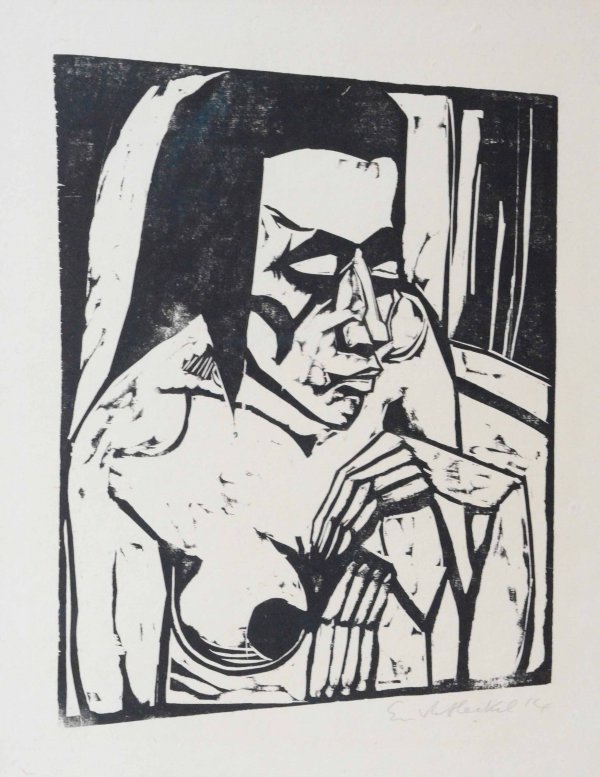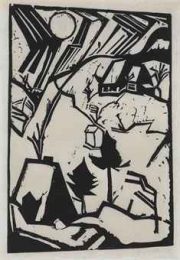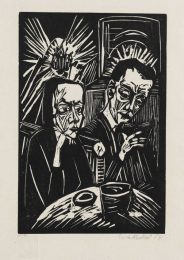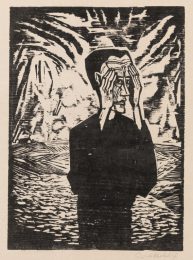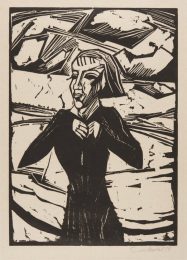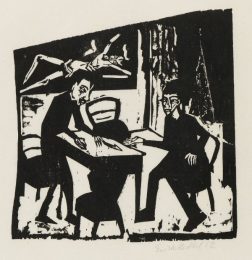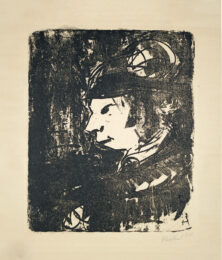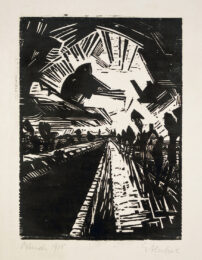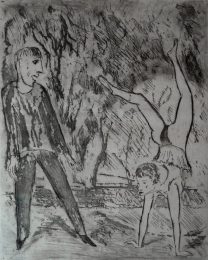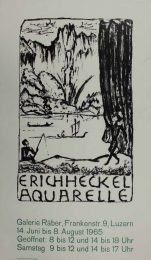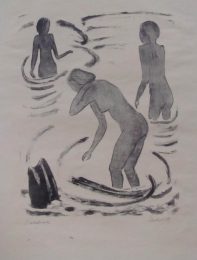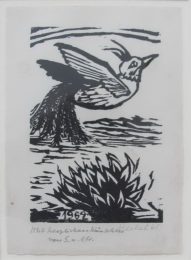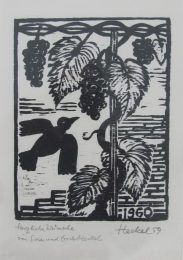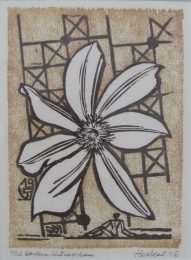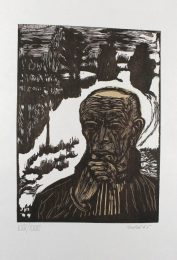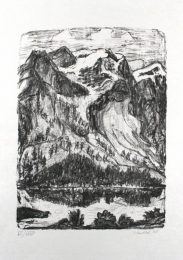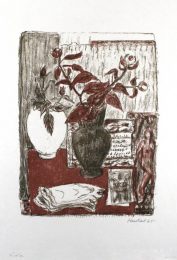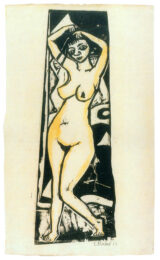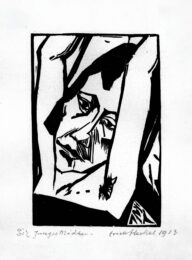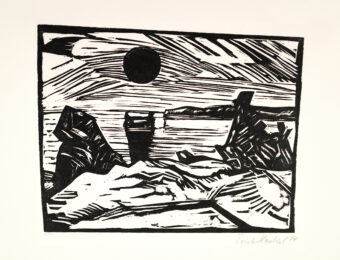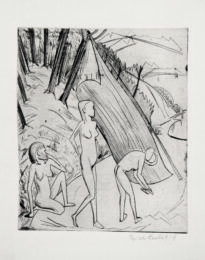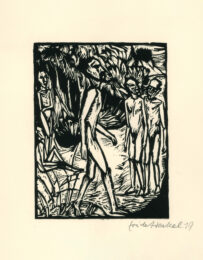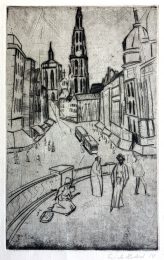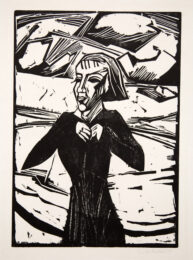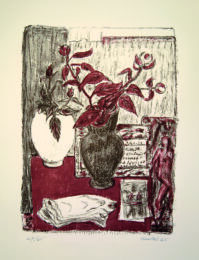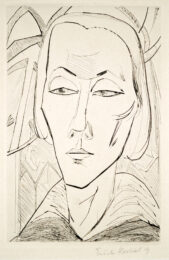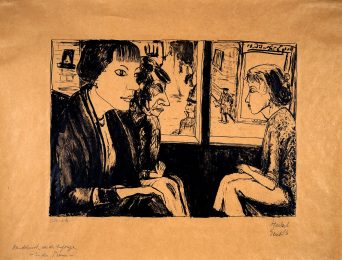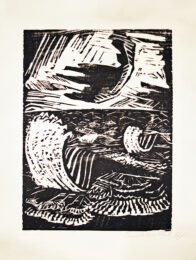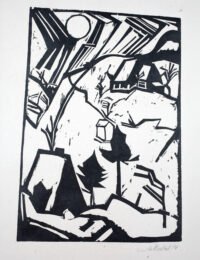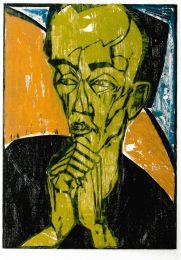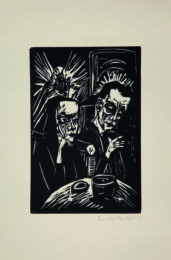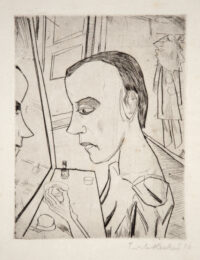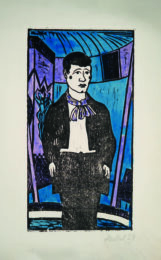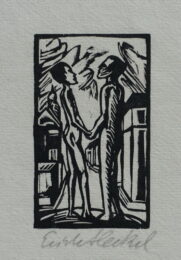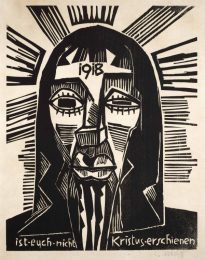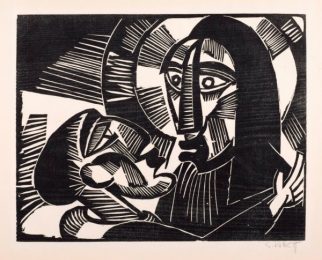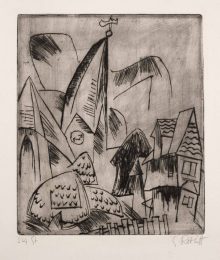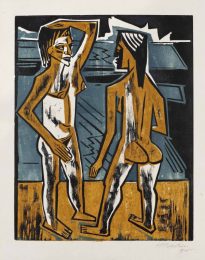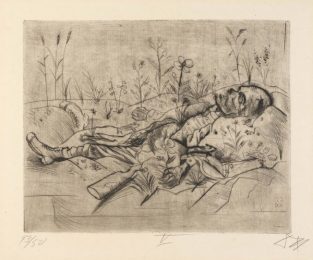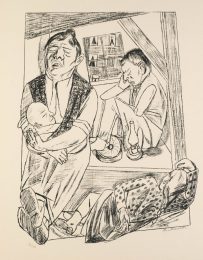Details — Click to read
This monumental woodcut was created at a high-point in the artist’s printmaking career. The intense close-up view of the model is roughly carved to retain powerful black outlines and rough textures in the ‘blank’ areas to give hints of modelling. The strong influences of figures and masks from the African continent exemplify the Expressionist mood. Heckel made particular use of uneven woodblocks at this time and his works are pervaded with a melancholy which contrasts strikingly with his works of his earlier Dresden years.
Although there is no known similar painting of this subject by Heckel, the image does bear comparison to the central figure in two major paintings of 1913 of bathers on the shore of the north German coast from his summer stay at Osterholz on the Flensburger Förde ( Frauen am Meer – Hüneke 1913-41 – Duisberg, Stiftung Wilhelm Lehmbruck Museum; and Gläserne Tag – Hüneke 1913-42 – Munich, Bayerische Stadtsgemäldesammlung). As is common with his woodcuts, Heckel employs a narrow focus, closing in on the main subject and abstracting the background, thereby intensifying the image.
Examples of this woodcut are in the collections of leading museums, including the British Museum,and the Victoria and Albert Museum, London, The Museum of Modern Art, New York and The Art Institute of Chicago. A preparatory drawing in Black Chalk from 1913 is in the Brücke Museum, Berlin. There is no recorded related painting of the period.

